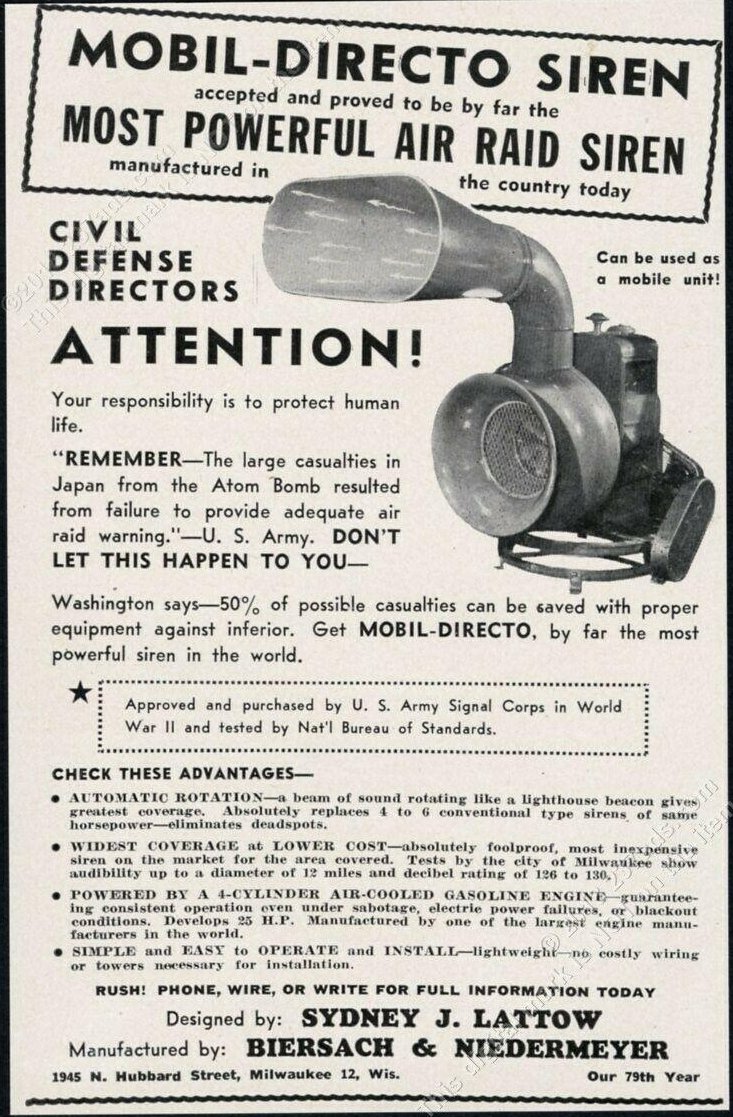The Model M was an early electric siren first developed in 1920 by the Inter-State Machine Products Company, who would later rebrand to the Sterling Siren Fire Alarm Company based out of Rochester, NY. The Model M was perhaps the most popular and widespread fire siren sold in North America, with units being sold across the US and Canada in great numbers. It is said that nearly every volunteer fire department in the eastern US had a Sterling Model M, or Sterling's other sirens such as the Model 5VX or Little Giant.
Unlike earlier electric sirens such as the Denver sirens I talked about in a previous post, the Model M was designed from the ground up to be weatherproof. Reliability in an emergency is everything, and its designer, Merton C. Armstrong, knew this. The choppers are covered with rounded "sounders" which also direct sound downwards, the motor is protected by a cover, and the air intakes on each side had protective wire mesh to keep debris out. By 1928, the siren would be improved with metal louvres on the intakes to further protect it. The Model M used motors between 3-10 horsepower, could be single or dual headed, and were rated to roughly 115 decibels @ 100 ft.
The Model M as previously mentioned saw incredible success. As shown by a friend of mine who made a map of every known Sterling siren, these sirens found their way everywhere. Unfortunately, by the late 1970s, competition became too great as Sterling's 50 year old design became obsolete. Sterling went out of business in 1972, but its designs were bought by a new company known as Sentry Siren who produced the Model M until 1986.
Sentry Siren is still in business today, and many of its sirens are directly based on the Model M's chopper design which is a testament to how good the Model M was. Many Model Ms remain in service today, including several units which are roughly 100 years old. Van Alstyne, TX's Model M is speculated to be the oldest surviving Model M, and is currently still in service.
Video of an early single tone Model M in Van Alstyne, TX, presumably the oldest known Model M
Video of a later dual tone Model M with louvred intakes in Columbus Grove, OH
![]()









Streetlight Manifesto